(LONG DOWNLOAD: 5 meg file no streaming. Okay for cable or DSL)
A Demonstration of Digging Trilobites
by the Dry Dredgers membership
View Video Clip of Driving
Wedges (.MPG 5,370k) ![]()
(LONG DOWNLOAD: 5 meg file no streaming. Okay for cable or
DSL)
The first step is to remove the weathered "overburden" from the clay
layers. A shovel is the best tool here. It is accepted that some trilobites may
be lost within the overburden in order to yield good quantities of trilobites in
the more viable shale below it.
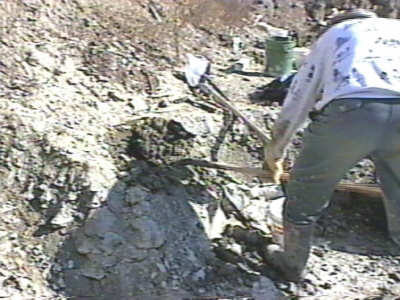
The trilobites are typically found in the dense, firm but moist clay. Within the
clay are hard nodules that must be carefully removed to preserve the
Flexicalymene trilobites that surround them.
.
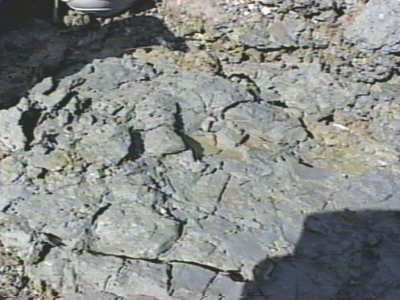
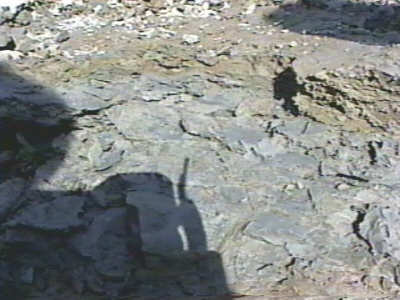
The clay has a "flaky" quality that allows a flat, smooth surface to
be prepared. It is this flat surface area that permits huge 5 to 12 inch
Isotelus trilobites to be lifted from the shale without serious damage to the
specimen.
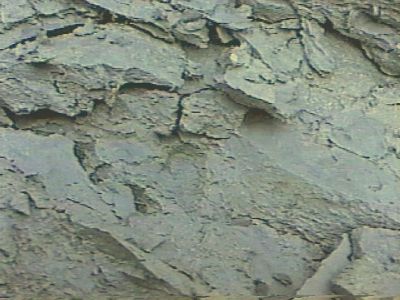
The next step is performed with a chisel or pick and a heavy hammer (such as
pictured below).
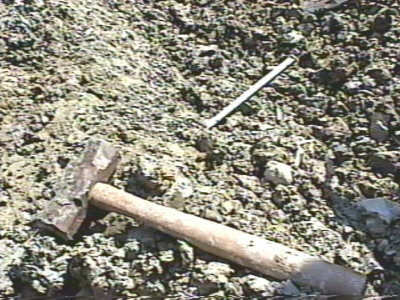
The chisel is hammered into the shale below the trilobite layer.
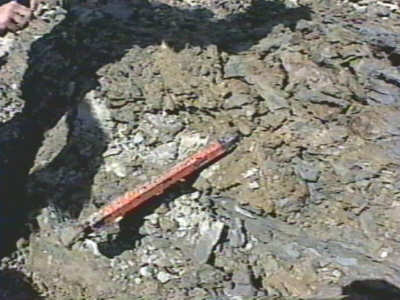
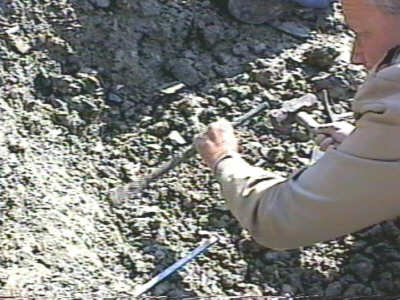
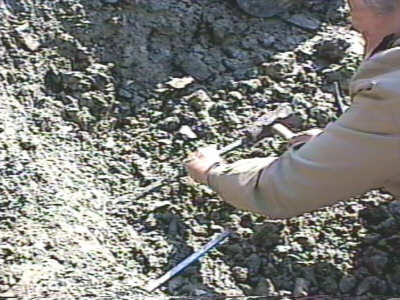
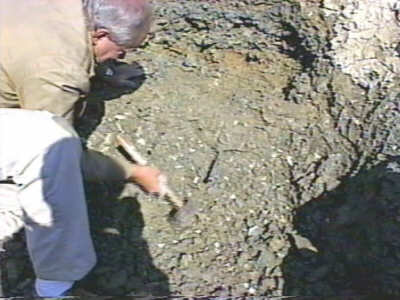
Additional chisels are hammered in at the same layer to cause the shale to
fracture along a natural horizontal plane.
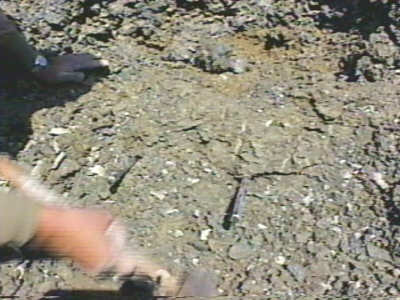
View Video Clip of Driving
Wedges
(.MPG 5,370k) ![]()
(LONG DOWNLOAD: 5 meg file no streaming. Okay for cable or
DSL)
Then the layer of shale is pulled loose by the chisel handles. This action
creates fractures throughout the trilobite layers that will allow the layers to
be separated carefully and examined.
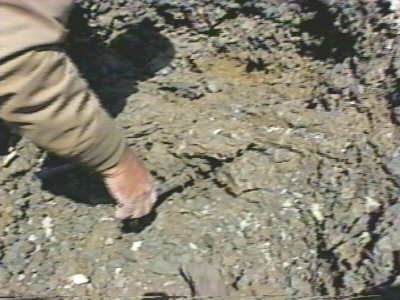

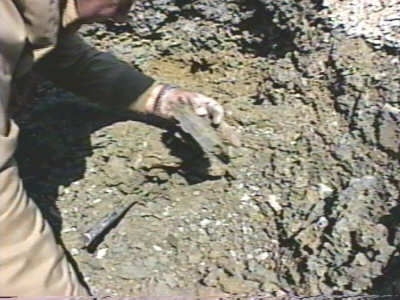
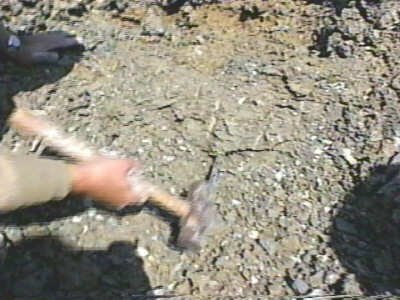

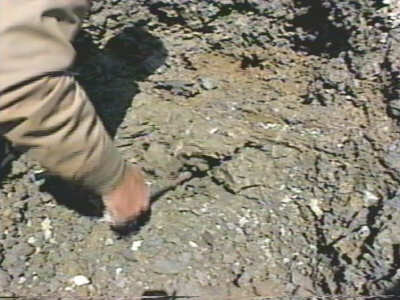
Entire units of shale can then be lifted out of the hillside for closer work.
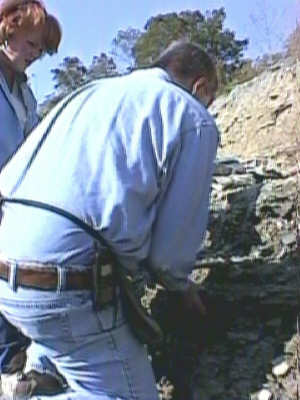
A putty knife is used to remove the surface of the shale along natural lines.
This fine work is what reveals the undamaged trilobites.
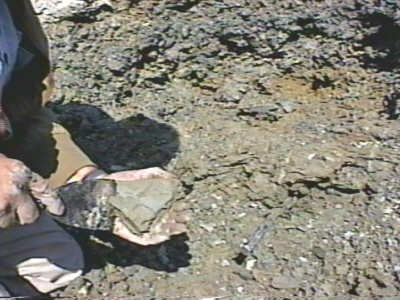
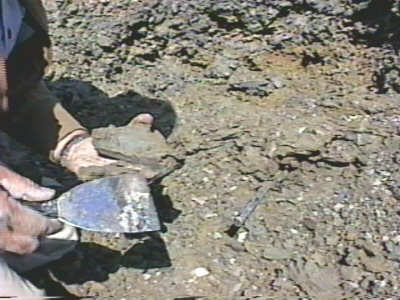
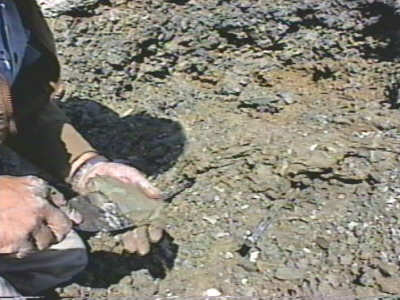
Here, the putty knife exposed the genal area of an Isotelus trilobite. The shale
is rich in the molted hard parts of Isotelus and Flexicalymene in addition to
complete fossil specimens.
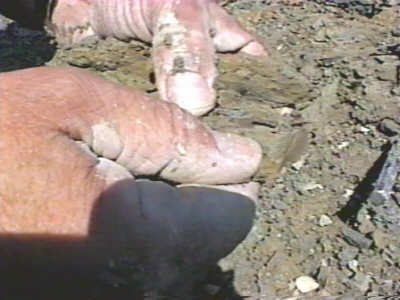
Upon finding a complete specimen (as shown below), it is important that the specimen be protected for the trip home and never cleaned on the site. Wrap the specimen - - with it's shale - - - in plastic wrap to keep the shale from drying. If the shale dries, it will shrink and possibly damage the specimen.
Isotelus trilobites have a vary thin and fragmented shell. The specimen
will flake away by the time you get it home if you do not coat it with an
adhesive. Elmer's white glue diluted with water does a good job.
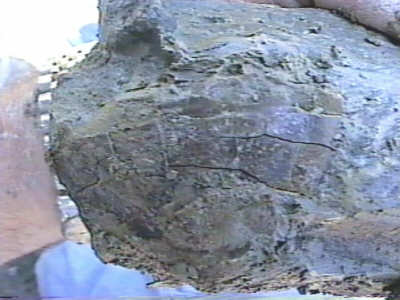
The Dry Dredgers and individual contributors reserve the
rights to all information, images, and content presented here. Permission to
reproduce in any fashion, must be requested in writing to admin@drydredgers.org.
www.drydredgers.org is designed and maintained by Bill Heimbrock.